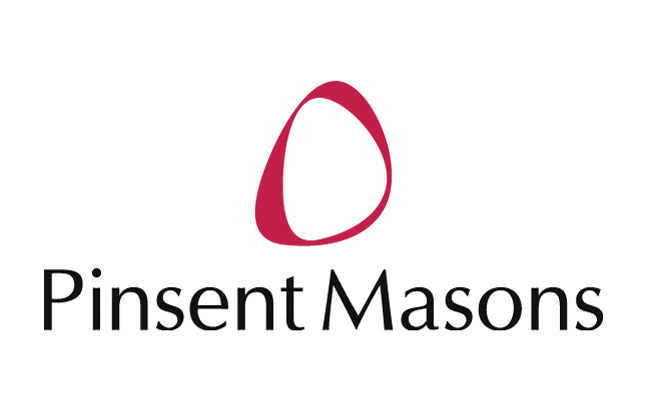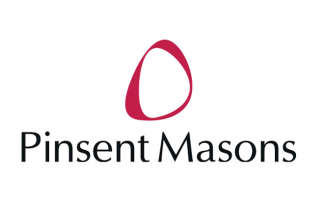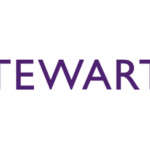The unprecedented global events of the past three years and growing importance of advanced technologies, such as artificial intelligence, have highlighted the role of innovative solutions in addressing new challenges. These events, including the Covid-19 pandemic and green transition, as well as the present economic slowdown, have led businesses to evaluate risk management strategies and exploit every opportunity to maximise revenue and reduce costs.
The success of businesses in technology-rich sectors – such as life sciences and communications technologies – is often underpinned by robust intellectual property (IP) strategies. However, sound IP management strategies are not limited to one sector: they play a role in the success of all businesses.
The evolving technological landscape has reinforced the need to evaluate the IP framework – specifically in respect of patents which protect inventions – in the European Union (EU) to put in place balanced policies to help companies capitalise on their innovations, while ensuring they enable economic growth and benefit society.
One such policy is a new European patent system for protecting inventions – crucial in fields such as medicines and vaccines, renewable energy, electronics, aerospace and defence. However, irrespective of sector, GCs who recognise the value of IP for their business, and who are able to take advantage of the new patent system while navigating the risks it may pose, will undoubtedly get ahead of the game in a competitive global marketplace.
A new European system for innovation
The new unitary patent (UP) and Unified Patent Court (UPC) system began on 1 June 2023. GCs will be fully appraised of market developments in their respective industries, and the role of horizon scanning, to identify future plans by competitors, should not be underestimated in the light of this new system. Put frankly, while European patent litigation may not form part of a business’ immediate strategy, it may nevertheless be key to that of competitors. This means that your business may be impacted.
There are multiple reasons for this broad assertion. The introduction of the new system – in the midst of an economic downturn – is timely. GCs need to implement cost-effective solutions that reduce risk and costs, while positioning the business for long-term success. Reducing investment in IP portfolios may be seen as a way to cut costs in the short term, but in the long term would be a mistake. Instead, a more astute approach may be to pivot into an alternative patenting strategy, taking advantage of the new system.
At present, there are two routes for obtaining patent protection in Europe: either through national Patent Offices, with the resulting national patent being enforced in the national courts, or via the European Patent Office (EPO), where, despite the name, the resulting ‘classic’ European Patent (EP) is essentially a bundle of national patents being enforced before national courts.
In contrast, the new UP will provide protection in 17 participating EU member states with one central registration, such that after grant, the costs are lower and the administrative process simpler, than the current system.
The advantages offered by this streamlined post-grant system may incite businesses to evaluate future patenting strategies. Further, the UP, and EPs that have not been ‘opted out’ of the new system, will automatically fall under the new UPC’s jurisdiction. This poses new opportunities and challenges that businesses must navigate.
Exploiting opportunities and managing risks presented by the UPC
In Europe, patent litigation has traditionally been dominated by large pharmaceutical and telecommunication companies. Patent owners use patents as defensive tools to protect market shares, or third parties seek to ‘knock out’ (ie, challenge the validity of) patents to enable them to enter these valuable markets. Many small and medium-sized enterprises have historically been dissuaded from enforcing or challenging patents in Europe due to the perceived complexities and costs. This has included the need for GCs to co-ordinate multiple national litigations, with different rules and procedures, and of course, multiple legal teams, thereby increasing external legal spend. Further, perhaps at the forefront of many GCs’ minds is the fact that multiple national litigations often lead to fragmented decisions across Europe, hence resulting in commercial uncertainty, which is never good for business. Relief also confined to smaller markets, and, compared, for example to US patent litigation, the potential for large damages awards is limited.
How will the UPC change this perception, particularly in economically challenging times? When it becomes clear that litigation is the only means by which a dispute may be resolved, GCs will be required to pursue the strategy – including the most appropriate forum – which will achieve the best outcome for their business. Although the UPC has been planned for a number of years, it has finally become a reality at, perhaps, the most serendipitous time. This is because many are of the view that, based on previous recessions, patent litigation is likely to increase in this economic downturn as companies seek new revenue streams to compensate for decreased profits on sales. The UPC will provide a new forum – essentially, a one-stop shop – for litigating patents in Europe.
During a seven (which may be extended to 14) year transition period, owners of EPs that have not been opted out may choose whether to bring a national or UPC action. Choosing the most appropriate forum will always involve balancing the pros and cons in each scenario – including product value, market share, target jurisdictions and patent strength. However, more nuanced issues are in play with the UPC which may make litigating patents in Europe a more viable option for some businesses. Perhaps the main selling point of the UPC is the fact that decisions will have effect over 17 participating EU member states, including major markets such as Germany, France, and the Netherlands. The UPC will therefore permit the enforcement of, or challenge to, a patent across a geographically and economically large market in one action.
For GCs involved in co-ordinating litigation, the UPC has one set of rules, aimed at harmonising patent laws and enforcement procedures across a large part of Europe. However, as budgets become ever tighter, a key attraction of a UPC action is likely to be the lower costs compared with multiple national litigations. The UPC court fee structure of a flat fee and a value-based fee provides some certainty for litigants, enabling more effective budget management. Fees will be lower than those in major markets such as Germany, making UPC litigation more cost effective than multiple national litigations.
It is worth noting, however, that the UPC will not replace national litigation entirely. This is because not all EU countries will participate in the UPC. Spain, Poland and Croatia are notable exceptions, as are non-EU countries, including the UK. These jurisdictions will continue to play an important role in European patent litigation strategies, and, where such markets are important to a business, should be factored into litigation budgets.
The availability of cross-border relief means that there are inherent tensions involved in UPC litigation. For patent owners, it means that valuable preliminary or final injunctions would apply to infringing activity in all UPC territories where the patent is in force. Such geographically wide remedies would be useful if infringing activities occur in multiple countries, often the case in IP-rich sectors including life sciences, technology, automotive, green tech and energy. However, a significant downside for patent owners is a big advantage for third parties seeking freedom to operate: the UPC may revoke (invalidate) a non-opted out EP or UP across all participating countries. However, the prospect of losing a valuable, income-generating patent may be too great a risk for a patent owner.
Importantly, as the UPC will grant relief over a wider territory, the new system offers the potential for higher awards compared with national courts. The UPC may award costs against a losing party. The successful party may recover ‘reasonable and proportionate’ legal costs from the loser, which could be significant.
UPC first instance decisions will be quicker than national courts, within 12-14 months from the initiation of proceedings. Choosing the UPC as a litigation venue will depend on the factual scenario, but for GCs, the benefit of a quicker decision, providing earlier commercial certainty for their stakeholders, and potentially facilitating earlier global resolutions may prove to be the deciding factor.
Practical risk management
Even if litigation does not feature in a business’ immediate plans, GCs should nevertheless take certain steps to position themselves for and manage the risks of this new system to avoid being on the backfoot if an action is brought against their business. This is particularly important given the short deadlines set by the UPC for responding to claims made against them.
Portfolio audit
For patent owners, reviewing patent portfolios, including evaluating who owns each asset and involve a review of European and national patent registers to ensure that they are up-to-date, should not be overlooked. As part of the audit, co-owned patents should be identified.
This step is critical because existing EPs will automatically fall within the UPC’s jurisdiction, unless the owner has made a positive decision to opt them out. Opt-out strategies are a challenging but essential aspect of a business’ strategic planning. Consideration should be given as to whether valuable patents and related income streams should be subject to an untested system. In the early days, there may be an element of unpredictability, which may be risky with valuable patents. On the other hand, including some patents in the system may help shape UPC case law.
It is critical that opt-out applications are accurate, and made by all co-owners if relevant. If not, the opt-out would be invalid. However, a patent owner will only discover this if UPC proceedings were issued against them, in which case the patent would be locked into being litigated before the UPC, which may not be desirable for the patent owner.
Horizon scanning
Regularly monitoring competitor activities should be standard, but with the introduction of the UPC, horizon scanning activities – and a bit of crystal ball gazing as to what steps competitors may take – should be intensified.
Patent owners should monitor competitor activities in the usual way to determine if their activities fall within the scope of their patent portfolios. Third parties should be aware of any patents on which their activities may arguably encroach. Both sides should consider whether the advantages of the UPC mean that patent litigation is now a realistic route by which they may achieve their business objectives – be it defending or accessing new markets.
Monitoring opt-outs filed by competitors via the publicly accessible UPC Registry may give an indication of which patents are considered to be business-critical and may give an insight into competitor strategies.
Further, businesses that opt-out can later opt their patents back into the UPC’s jurisdiction if the patent has not been subject to national court proceedings in the interim. However, withdrawing an opt-out is a permanent action, as opting out can only be done once, therefore horizon scanning will be key.
Commercial agreement audit
Commercial IP agreements should be examined with a view to understanding the impact of the UPC on their operation.
Going forward, parties should agree a mechanism for deciding if newly granted EPs are in or outside of the UPC jurisdiction. Such provisions are particularly important in exclusive licences where the decision of one party can materially impact the rights of the other.
If the agreement is entirely silent, then the patent owner, or their authorised representative, would, by default, have the right to make the decision – not the exclusive licensee. For an exclusive licensee that has a large market presence in one or more countries in Europe, this may come as a surprise.
Consideration should be given as to who should decide to enforce a patent, and who would have control of any litigation. In an exclusive licence, both the proprietor/applicant and the exclusive licensee would have scope to litigate the patents, but may have very different views on where an action should be brought, particularly as a UPC decision could invalidate the EPs across all UPC participating member states. Licensors and licensees will want clarity and a degree of control over such enforcement decisions.
Conclusion
The UPC provides an additional forum for European patent litigation. With it comes new strategic opportunities and challenges for businesses that must be navigated. GCs who evaluate business strategies and competitor activities at an early stage will ensure that their business is well positioned to respond to opportunities and challenges offered by the new system.
For more information, please contact:

Emmanuel Gougé
Partner, solicitor (England and Wales)
Avocat au Barreau
de Paris
T: +33153530868
E: emmanuel.gouge@pinsentmasons.com

Judith Krens
Partner
Advocaat
T: +31207977730
E: judith.krens@pinsentmasons.com














